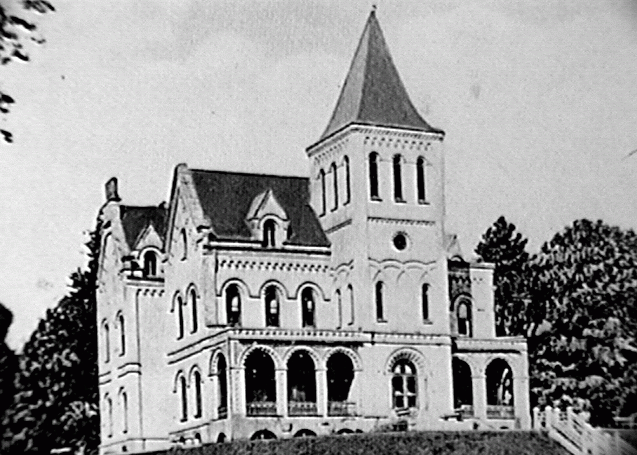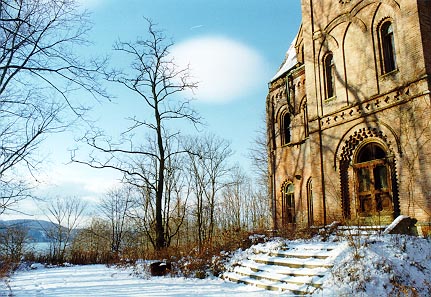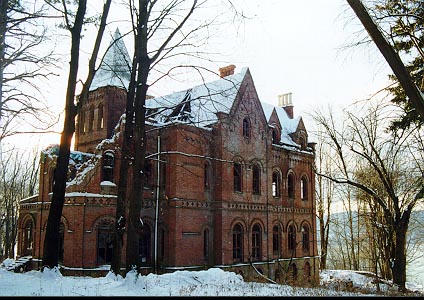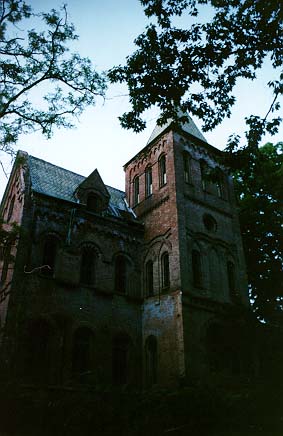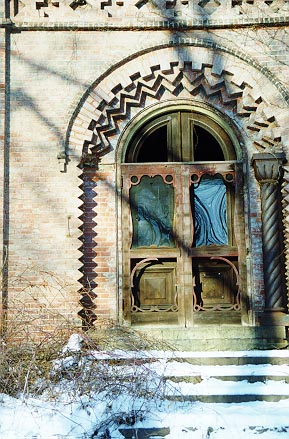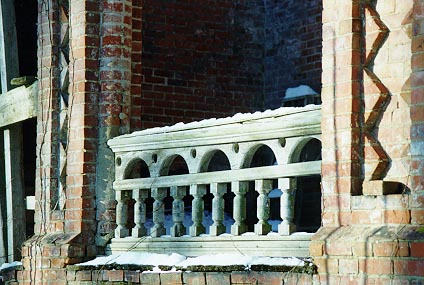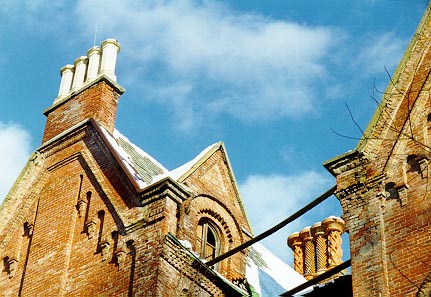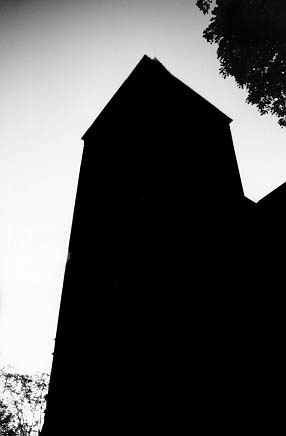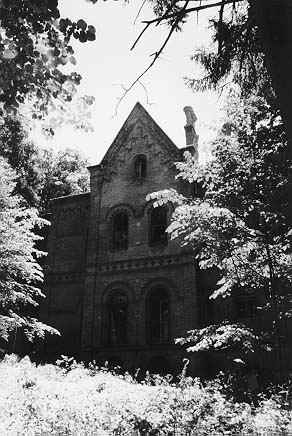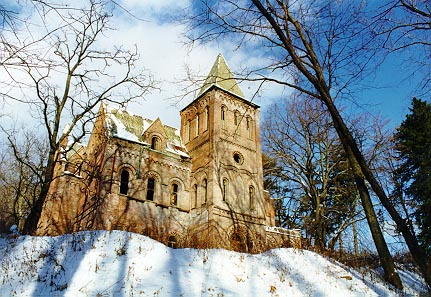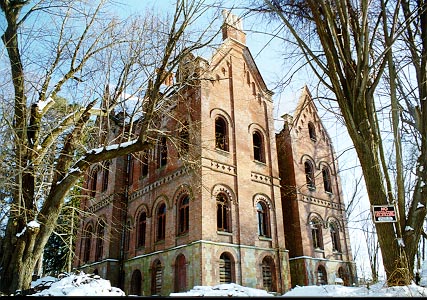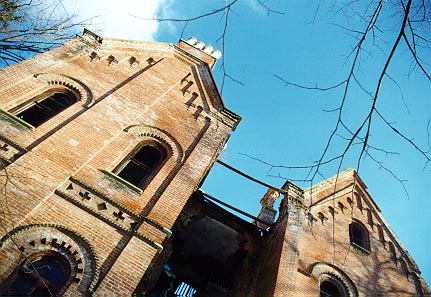WYNDCLYFFE - R H I N E C L I F F - UPDATE: As of November 2003, restoration work is underway at Wyndclyffe. This is the first serious attempt to save the house in 25 years. Under new ownership, the mansion is no longer derelict and abandoned, but is now a private home undergoing reconstruction. Anyone interested in seeing the house should regard the property as such. Best of luck to the new owner in this ambitious effort to save one of the most historic houses in the Hudson Valley. PERCHED on a bluff high above the Hudson stands a large old house called Wyndclyffe. It was built in 1853 for Elizabeth Schermerhorn Jones, cousin by marriage to William B. Astor, Jr. "Miss Jones," as she was known, is thought to have lived alone at Wyndclyffe after the death of her brother Edward in 1869. IF WYNDCLYFFE wasn't the happiest home on the Hudson, it was nonetheless one of the largest - with its twenty-three rooms, its boat and carriage houses, its terraced lawns, Wyndclyffe was then one of the most impressive mansions in the country. So imposing was the estate that it is rumored to have inspired the phrase "keeping up with the Jonses." THE SOURCE of Wyndclyffe's design is today something of a mystery. While John Zukowsky and Robbe Pierce Stimson's book Hudson River Villas attributes the mansion to an architect by the name of Gardner, a Historic American Buildings Survey conducted on the site in 1975 suggests that Wyndclyffe may have been designed by a local architect named George Veitch. Veitch had the year before Wyndclyffe's construction designed Rhinebeck's Episcople Church, of which Miss Jones and her brother Edward were patrons. WITH its Romanesque arches and towers, Wyndclyffe seemed to anticipate the high-Victorian work that would come later in the century. Inside, the floor-plan was centered around a three-story atrium, whose rich woodwork was surmounted by what must have been an elaborate glass skylight.
"Click on image to enlarge." NOW, the barns and tennis courts are gone, and the terraced lawns have been engulfed in secondary growth. Of the original landscaping, only a few odd Linden trees remain. From the river only the very top of Wyndclyffe's tower can be seen peering through the trees. The east wing has collapsed in upon itself, leaving only the exterior walls behind. © T.E. Rinaldi, 2006
|
